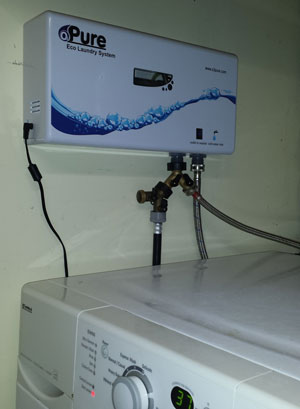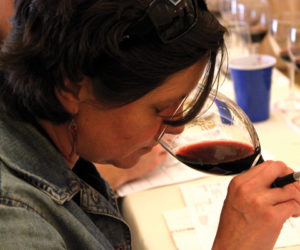Cap recycling
Q
Can I reuse bottles with screw on caps for bottling wine?
Jim Neumeister
via email

A
What you describe, reusing commercial screwcap wine bottles for subsequent bottlings, is something no commercial winery would ever do. Once the cap is twisted off and the threads detach (the “clicking” sound heard instead of the “pop” of a cork), the safety and integrity of that seal are forever compromised and there’s no way to guarantee a bottle would reach its destination with a loose cap still attached. Though the cap will feel like it has screwed back on tight (and probably is), there is still a slight chance that microbes and oxygen could make ingress and spoil the bottle, which is something that all wineries — commercial or not — try to avoid. However, in the spirit of recycling, saving money or just to get that last half-case of overflow into some kind of bottle, it is possible for home winemakers to use non-new or non-traditional containers for final bottling.
Reusing containers harks back to the thousands of years of winemaking history, namely because vintners of old were forced to use whatever kind of vessels they had hanging around. Ancient Egyptians used clay jars, Greeks employed amphorae and Romans filled barrels. Interestingly, the so-called traditional cork-and-bottle combo we’re used to wasn’t even invented until the 1700’s. Did the winemakers of yesterday reuse their wine storage, selling and serving vessels? You bet they did, as can you.
It’s best to employ all used or recycled containers advisedly, however. Never reuse a bottle that you can’t get clean, is broken or has held anything toxic or poisonous. When in doubt, it’s always best to use a new bottle. In the case of screwcap wine bottles, be very aware that you will not be able to form as impervious a seal as it had when it was new. There is a small paper and plastic (and sometimes aluminum) pad or gasket on the underside of the cap that compresses slightly against the lip of the bottle and is pressed down when the screw cap is put on. Commercial wineries pay thousands of dollars for the specialized capper needed to form the threads on to the specialized bottles and the seal is formed at the moment the wine is capped. By re-screwing a screwcap onto a bottle, you certainly can recreate the original position of the wine-tight seal but keep in mind that with any kind of jostling of the bottle, the cap could become unscrewed and air, bacteria or yeast might leak in underneath.
I’ve never reused screwcap bottles myself, but my husband once reused two San Pellegrino sparkling water bottles (and their caps) for his beer. One of the bottles held its seal during the priming and aging process; the beer tasted great and was fizzy just as his crown-capped bottles were. However, the other bottle didn’t maintain its seal and allowed all of the carbon dioxide to escape, resulting in a flat, spoiled bottle. He no longer reuses such bottles and their commercial screw caps and sticks to reusing beer bottles that take new crown caps or the Grolsch-type swing-cap bottles, which employ a thick gasket and a lot of pressure to create a good seal.
Perhaps you could take a reasonable middle road approach here. I don’t advise bottling up your entire batch in reused screwcap wine bottles but I would think it would be fine to bottle up a few, especially if your wine is an “early drinker” and doesn’t need a lot of aging. We all can probably agree that as a last resort, using a tightly re-screwed screwcap bottle is much better than letting your last few liters go to waste unbottled. Though you need to be aware of the risks involved (possible oxygen and microbial ingress over time), I applaud your frugality and practicality and don’t discourage you from trying it on a few bottles. For me, the ultimate in quality and sustainable bottling for the home winemaker (since access to screwcapping machinery is impossible at this time) would be using sparkling wine bottles and crown caps. You get all of the tightness of a good screwcap seal, none of the TCA or “corked” challenges of using natural cork, you’re not depleting the cork oak population, and when opened, your waste just includes the small crown cap, not a cork and foil. Only because of consumer expectation (something enlightened home winemakers need not concern themselves with), and not wine quality reasons, do no wineries do this.
pH of non-grape wines
Q
I live in sunny Alaska and we don’t usually have a ready supply of grapes. I usually make dandelion, crabapple, blueberry, rhubarb, raspberry, rosehip and strawberry wines because those are more available here. How does pH affect non-grape wines? What effect do tartaric acid additions have on these fruits? I usually adjust acidity using an acid test kit to make my first rough additions, then to taste with acid blend. What else should I do to move from adequate wines to great wines?
A. J. Rawls
Anchorage, Alaska

A
It seems like you already have the acidity-adjusting situation well in hand — this is often one of the areas in which non-grape wines meet their downfall. As you already have realized, the first step to making great wines from non-grape sources is to recognize that these materials are different from grapes and will usually (though not always), lack the necessary acidity, sugar content and nutrient balance to result in a pleasing, balanced, ageable and microbially-stable beverage. You are doing yourself and your wines a great service by using an acid test kit, coupled with your natural sense of taste, to adjust the acidity appropriately.
When dealing with any kind of non-grape material for winemaking, it’s important to remember the chemistry parameters of what will, hopefully, yield wine as an end product. The starting material (juice, must or composed “brew” of non-grape items) of most table wines (we’ll leave the discussion of dessert, sweet, fortified or sparkling wines for subsequent columns) made from grapes fall within the following ranges: Titratable (or Total) Acidity: 5.0–8.0 g/L, pH 3.10–3.65, Brix (sugar levels) 22.0–26.0.
Due to style desires as well as practicality, however, non-grape or country wines are often started with lower sugar levels and will result in a lower eventual alcohol content, like 9.0% or 10.0%. This is perfectly fine, though the wines may not age as long as a higher-alcohol table wine.
Once you tackle the above parameters and adjust your country wine’s starting material accordingly, I recommend that you think about adding some tannins to your wines, especially if you are trying to mimic a red wine style using blackberries, blueberries or elderberries. Tannins, naturally present in abundance in all grape wines, even whites, are natural antioxidants. They help a wine age longer and can provide sensorial balance and a sense of grip on the tongue. Many home winemaking stores and catalogues carry some kind of tannin mix and there has been an increasingly sophisticated selection available through commercial winemaking suppliers like Scott Labs, Gusmer Cellulo and Vinquiry.
Grape juice concentrates can also be a balanced and authentic source of tannins as well as a host of other goodies including amino acids, aromatic compounds and trace nutrients that will all contribute to better wines. Instead of using table sugar, honey or other fruit juice concentrates, I suggest getting a portion of your wine’s sugar from grape juice concentrate, red or white, depending on what kind of wine you’re hoping to make. These can be easily mail-ordered or ordered online and shipped to your location. I recommend brands that don’t contain potassium sorbate, which can inhibit yeast. You may also want to try using a yeast nutrient like Superfood (sold by American Tartaric) or other blend sold by the above tannin suppliers. These nutrient blends will help to ensure that your yeast have all of the micro and macronutrients they need for a healthy and happy fermentation, which always will lead you to better wine.
When making non-grape wines, besides mimicking the starting material of grapes as much as possible, you need to also be sure to treat the finished wines with much care and respect. Very often, the delicate aromas, light colors and ephemeral tastes of country wines won’t age as well as a grape wine would. For this reason, it’s critical to store your finished wines well away from heat and light. It’s also important to try to store them somewhere where the temperature won’t widely swing from one extreme to another. Interior closets away from outside house walls can be great for someone lacking a cellar or basement.






